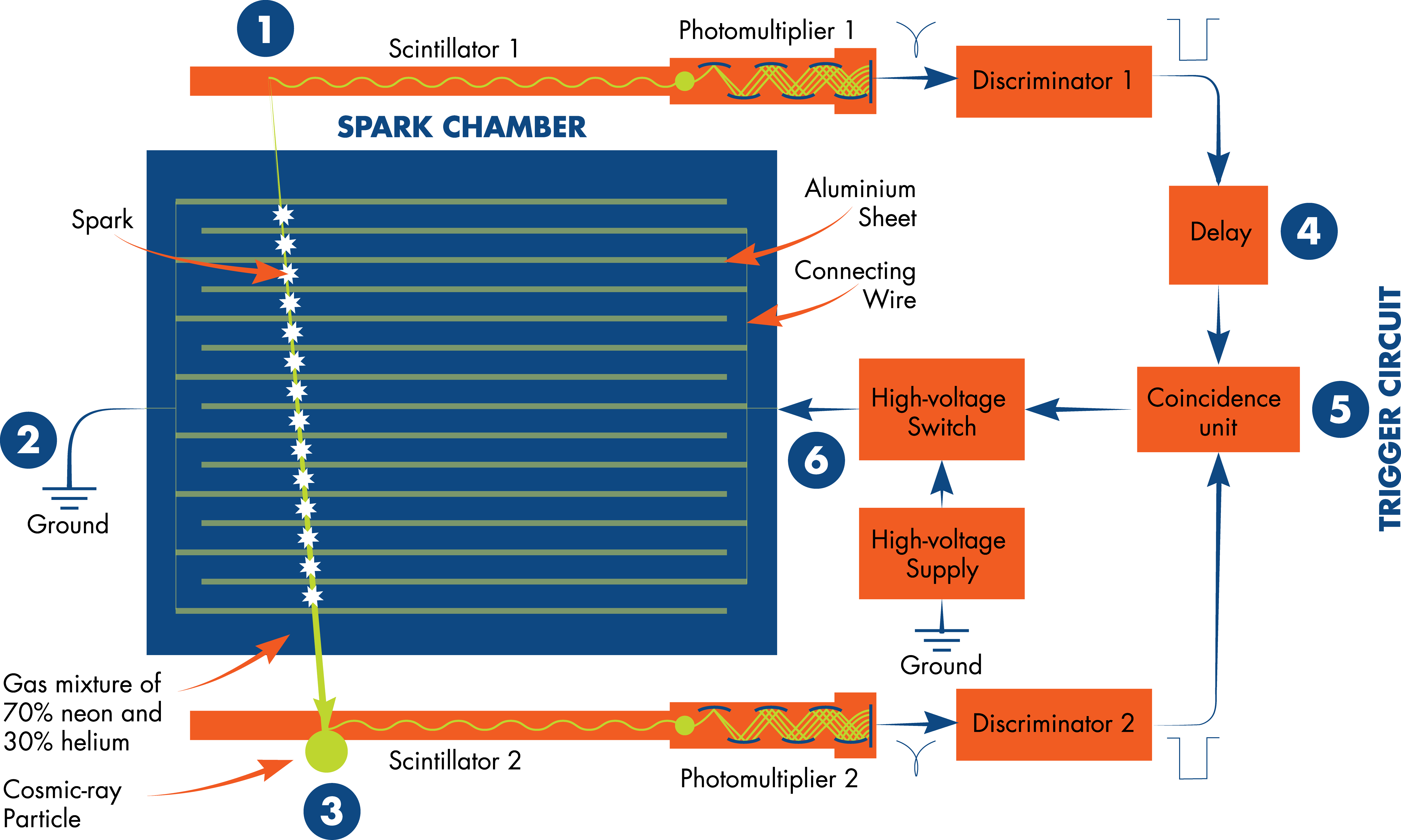Spark chamber

1 & 3: The cosmic-ray particle crossing the scintillator causes light to be emitted. A part of this light travels to the photomultiplier, where it is converted into an electronic signal. The discriminator gives a binary (yes/no) response, producing a square-wave signal if the output from the photomultiplier is above a noise threshold, or no signal otherwise
2: As the cosmic-ray particle crosses the neon-helium gas mixture inside the chamber, it causes ionisation along its path, locally decreasing the electrical resistance.
4: A length of cable is used to delay the signal from discriminator 1 by the time taken for the cosmic-ray particle to travel between scintillator 1 and scintillator 2.
5: When the coincidence unit records signals arriving simultaneously from the two discriminators, it triggers the switching on of the high-voltage supply for a short time interval. This creates large electric fields between neighbouring aluminium sheets in the spark chamber.
6: The large electric fields create current flows along the paths of lowest electrical resistance, meaning where the cosmic-ray particle caused ionisation. These current flows are seen as sparks.
The spark chamber was developed between the late 1940s and the early 1960s, with contributions from many people. It is a variation on a particle detector first demonstrated by Hans Geiger and Walther Müller at the University of Kiel, in 1928. Spark chambers were the first widely used track-visualisation devices that allowed triggering. This meant that they could be used with an independent logic circuit that triggered activation of the detector when specific conditions were satisfied. In most studies, only a tiny fraction of particle interactions are of interest, and having detectors that can be triggered so as to select these is essential. Large-volume spark chambers were used in the discovery of the muon-type neutrino, in 1962.
Birmingham spark chamber
The videos linked below illustrate the operation of a spark chamber, using a demonstration model built at the University of Birmingham.







